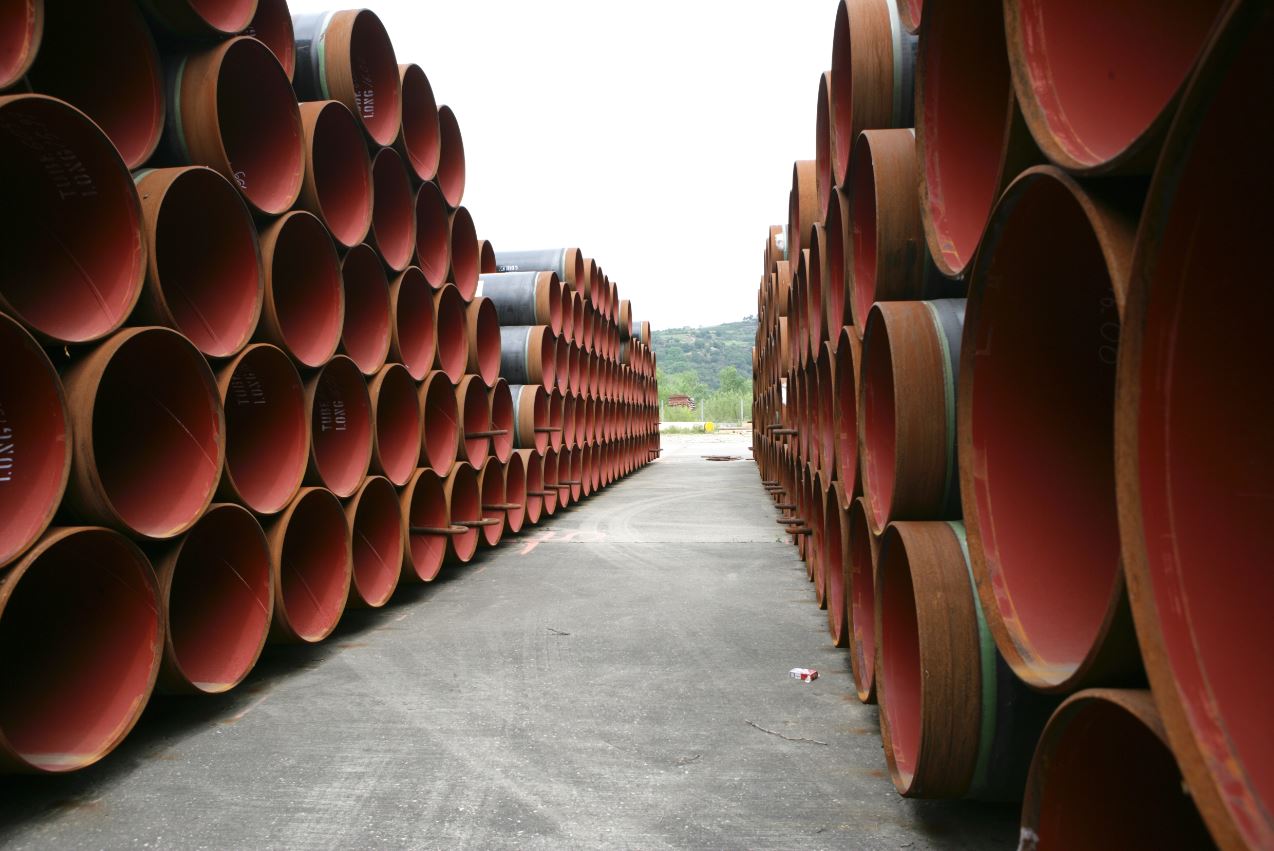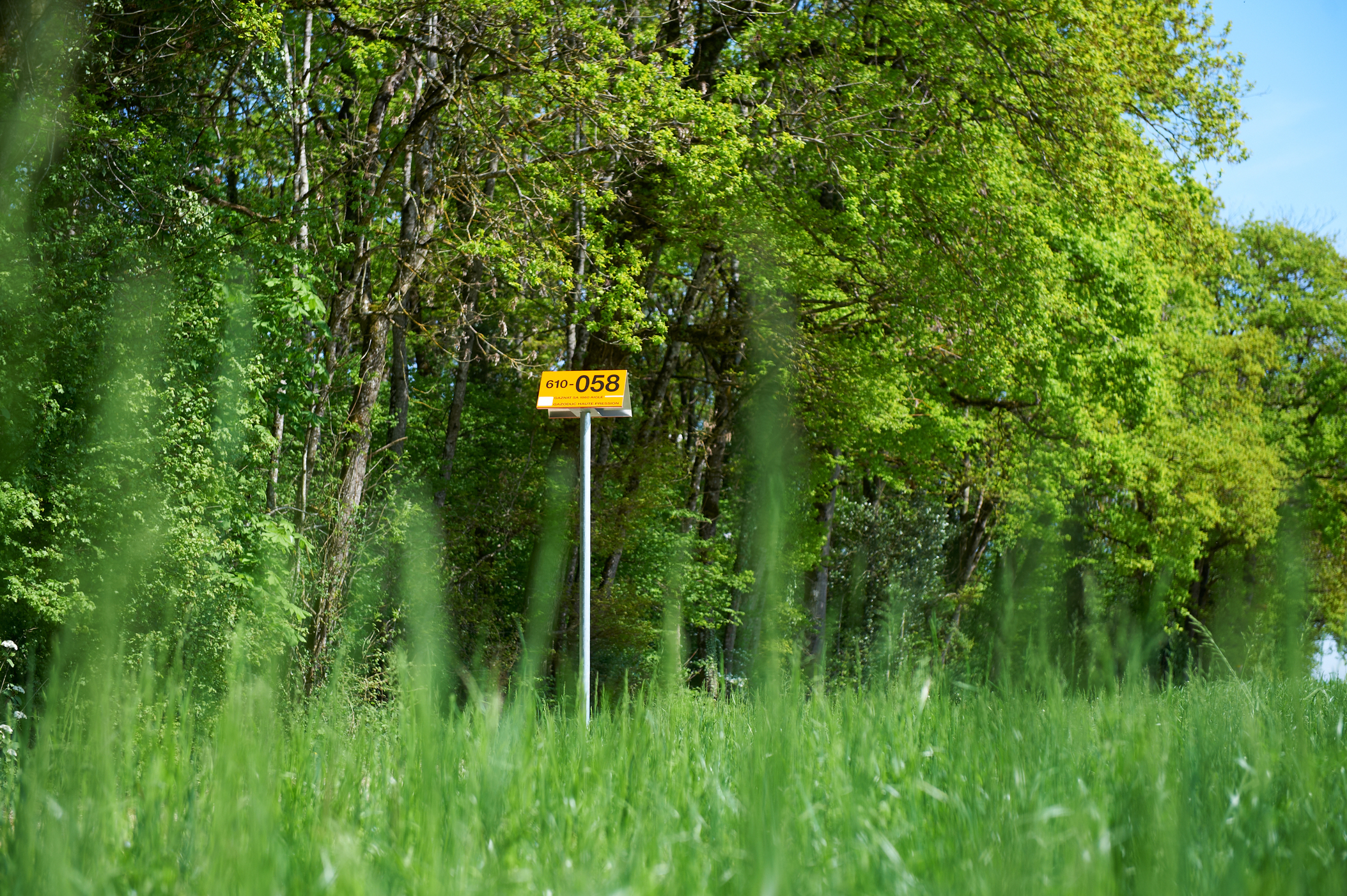Transportation
Gaznat’s high-pressure transportation network covers more than 600 kilometres of pipes and has 56 stations. It interconnects with the European high-pressure network at five different points: La Cure, La Louvière, Bardonnex, Obergesteln and Ruswil.

Gas pipeline awaiting installation
Gaznat procures natural gas for its network from the east, via the international Transitgas pipeline which crosses Switzerland from north to south, and from the west, via the main transportation pipelines entering from France. The Rhone gas pipeline operated by Swissgas links the Transitgas pipeline to the Gaznat network at Obergesteln, in the Conches valley.
Globally, gas pipelines form a vast network of natural gas highways, with a combined length of 1,000,000km. The distance covered between the gas deposit and the point of consumption may be over 4,000km.
Natural gas is extracted at a pressure of 200 to 300 bar. After being dried and purified, it is then transported in the form of gas at 80 bar or in liquid form. The pressure is reduced to 5 bar at the delivery stations, where the distribution companies take possession of the gas and transport it to the end consumer.
In its gaseous state, natural gas is transported from other countries in thick steel pipes which may be as large as 1.4 metres in diameter. Gas pipelines are buried at a depth of at least 1 metre (underground gas pipelines) or immersed (undersea pipelines). They are insulated on the outside by a layer of polyethylene. A particularly effective technique known as cathodic protection is used to ensure that buried metallic structures do not corrode.
When gas travels at high speed, friction gradually reduces the pressure inside the gas pipeline. That is why compressor stations, which repressurise the gas to about 80 bar, are installed every 100km.
Unlike power lines, gas pipelines are not visible in the landscape. Orange rectangular marker posts indicate the route taken by an underground gas pipeline.

Marker post showing the route of an underground gas pipeline
A gas pipeline can transport large quantities of energy without adding to road traffic or polluting the atmosphere. A pipe with a diameter of 40 cm can safely and easily transport enough energy to supply a city such as Geneva or Lausanne.
Gas is increasingly being transported by sea in liquid form, on ships known as “LNG carriers” that are specially equipped with tanks (giant vacuum flasks). At the port of shipment, the natural gas is liquefied (LNG) by cooling it to -163°. This reduces its volume by 600 times. The ships deliver the natural gas directly to LNG terminals in Europe, the US and Asia. There, the liquefied natural gas is stored in insulated tanks, then reprocessed and injected into onshore gas pipelines in gas form.